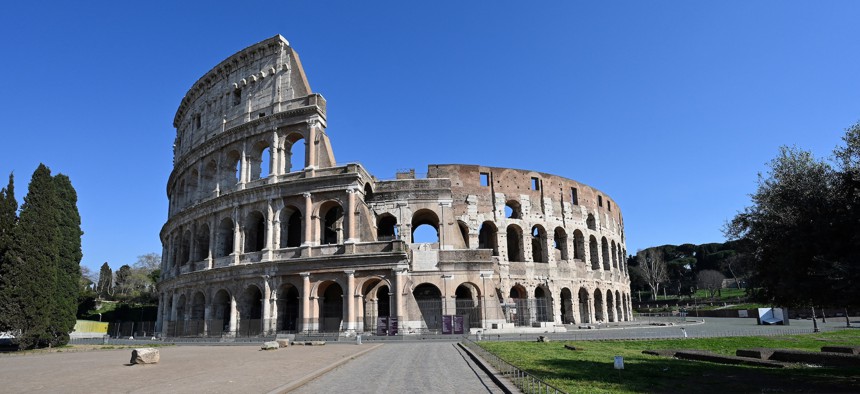How often do you think about the Roman Empire? If you’re in the Empire State, it’s probably a lot. That’s because so many of our cities are named after famous places of classical antiquity. When New York was dividing up land to be awarded to Revolutionary War soldiers in the late 1700s, Robert Harpur, who worked as a clerk in the state Surveyor General’s office, assigned a lot of those classical names to townships in Central New York. City & State takes you on an odyssey from ancient Mesopotamia to ancient Rome.
Ancient Mesopotamia
Babylon, once situated on the Euphrates River, was one of the most important cities in the region. It is also a town in Suffolk County, in addition to the nearby North Babylon and West Babylon. There’s also Nineveh in Broome County, named for the ancient Assyrian city.
Ancient Greece
Some New York towns are self-explanatory when it comes to their origins: Greece, Athens and Sparta. Ithaca is the home island of Odysseus in Homer’s epic. Troy is the setting for the famous Greek myth. Syracuse, the Silician town, was founded by Corinithians. Lysander, a Spartan military leader, is also a town in Onondaga County. Smyrna in Chenango County was named after a coastal town in ancient Greece.
Ancient Rome
There’s obviously Rome, New York. There’s a Romulus, New York, named for one of the twin brothers who in myth founded the city of Rome, but sadly there’s no Remus, New York. Cicero was named after the Roman statesman and writer, while Brutus for the assassin of Julius Caesar. Aurelis, named for Roman emperor Marcus Aurelius, and Scipio for Roman general Scipio Africanus are two other examples.
Others
In modern-day Tunisia, Carthage became the center of an ancient empire on the North African coast – in addition to being a village near Watertown, New York. And Hannibal, the famed Carthaginian general, is a town less than two hours south of Carthage.
And Valhalla in Norse mythology is a hall for those who died in combat presided over by the gods – in addition to being located in Westchester County.


